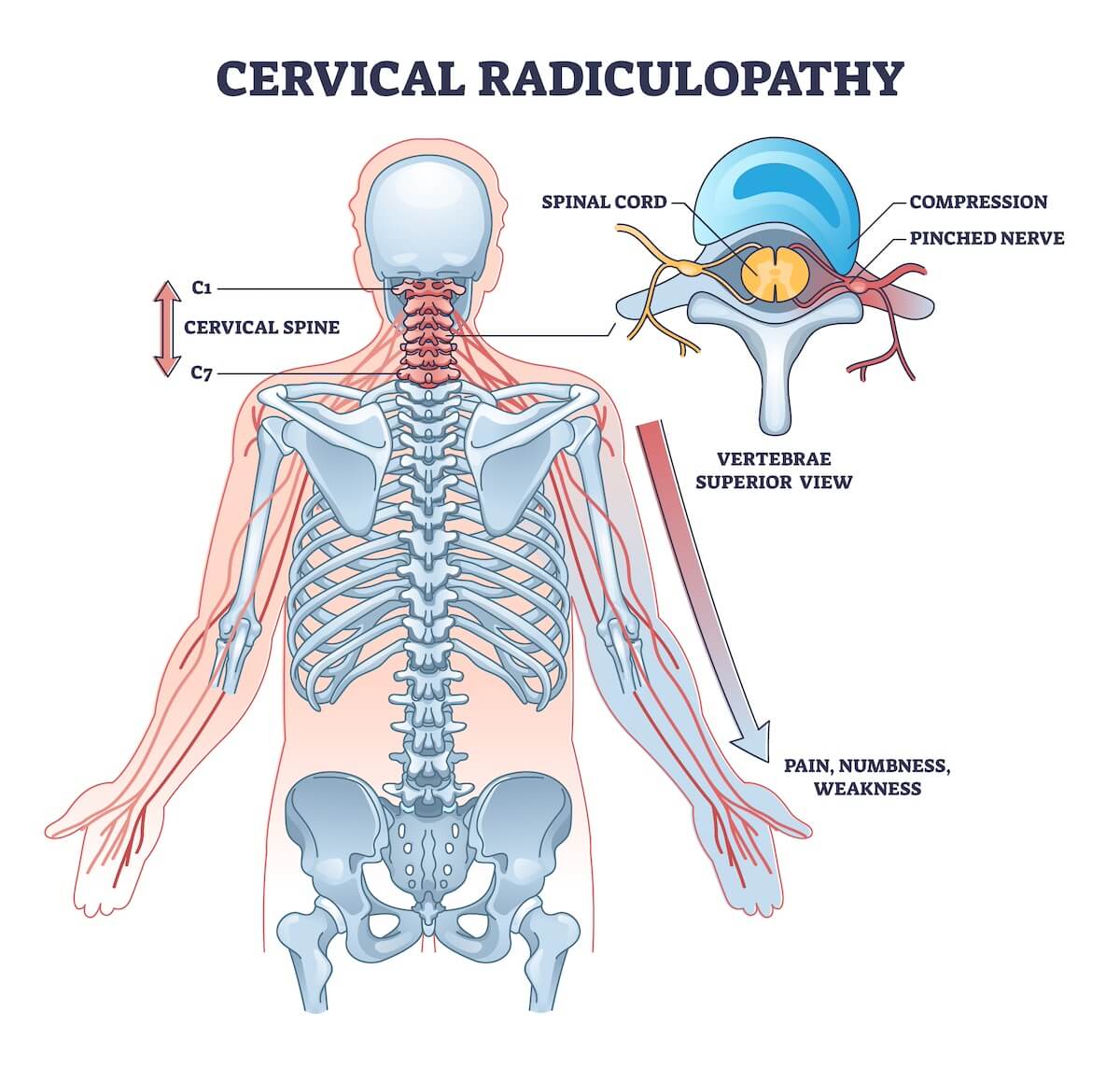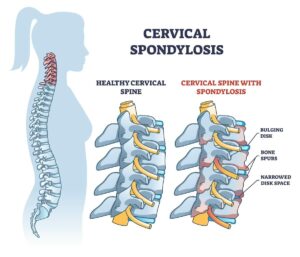Free download: Top 10 Natural & Easy Remedies for Joint Pain from Home. Learn these helpful remedies.
Estimated Reading Time: 7 minutes read
Living with neck pain or discomfort in your arms can be challenging, especially when it stems from a condition known as cervical radiculopathy. This condition occurs when a nerve in your neck is compressed or irritated, leading to pain, numbness, or weakness that can radiate down your arm.
Fortunately, some exercises can help manage this condition, improving your quality of life. In this easy-to-understand guide, we’ll explore 8 exercises specifically designed to deal with cervical radiculopathy, aiming to provide relief and prevent further issues.
Cervical radiculopathy can be a result of various factors, including poor posture, repetitive movements, or natural aging processes that lead to changes in the spine. Before diving into the exercises, it’s crucial to understand the causes and symptoms associated with this condition. This knowledge will not only help you manage the condition but also prevent its occurrence or recurrence.
Table of Contents
Causes of Cervical Radiculopathy
- Poor posture: Spending long hours in front of a computer or looking down at your phone can strain your neck muscles.
- Repetitive movements: Activities that involve repetitive neck or arm movements can increase the risk.
- Aging: Natural wear and tear of the spine over time can lead to conditions like herniated disks or bone spurs, which can compress nerves.
- Injury: Accidents or sports injuries can cause immediate damage to the neck area, leading to this condition.
- Heavy lifting: Improper lifting of heavy objects can strain the neck, potentially causing nerve compression.
- Genetic factors: In some cases, a predisposition to spinal issues can be inherited.
Symptoms to Watch Out For
- Pain in the neck: This can range from mild to severe and may radiate down the arm.
- Numbness or tingling: Especially in the arms or hands, indicating nerve irritation.
- Weakness: You might find it difficult to grip objects or perform tasks requiring arm strength.
- Reduced mobility: Turning your head or bending your neck might become challenging.
- Headaches: Often, the pain can extend to the head, causing tension headaches.
- Sensory changes: You may notice changes in how you feel heat, cold, or touch in the affected areas.
Understanding these causes and symptoms is the first step toward managing cervical radiculopathy effectively. With this knowledge, you can take proactive steps, including performing specific exercises that target the affected area.
A Better Approach to Exercise for Neck Pain Relief
Before we list the exercises, it’s essential to emphasize the importance of performing them correctly and consistently. These exercises are designed not only to provide relief but also to strengthen the muscles around the neck and improve flexibility, reducing the risk of future problems.
A: Soft Tissue Mobilization
Soft tissue mobilization is a key technique in addressing the discomfort caused by spinal nerve compression. This method focuses on easing tension in the muscles, ligaments, and fascia that surround the spine. By using simple tools like a lacrosse ball or a foam roller, you can apply targeted pressure to tight spots, known as trigger points. This pressure helps break up the knots, boosting blood flow and promoting healing in the affected areas.
While soft tissue mobilization is effective in reducing pain and improving mobility, it’s essential to practice it with care. Listen to your body and avoid pushing into pain. Proper technique is crucial, so consider seeking guidance from a professional. Regular, mindful practice can make a significant difference, offering a path to relief and contributing to your overall spinal health.
B: Nerve Glides
1. Ulnar Nerve Glide
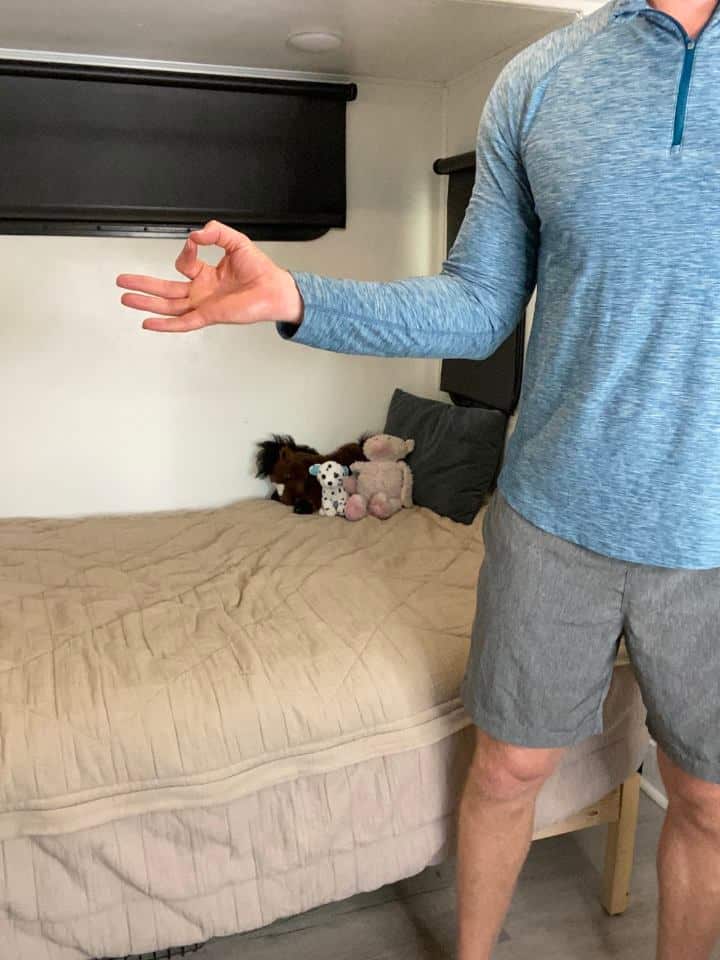
Step 1: Your starting position will be holding your arm out to the side and gently bend the elbow. Make a circle with your thumb and index finger touching as if you’re saying you’re “A-okay.” Your palm should be facing out to the side, away from you.
Step 2: Begin to move the hand towards your head while extending the wrist back towards you. Make sure to keep your “A-okay” sign. The fingers should now be pointing towards you with the palm facing the ceiling.
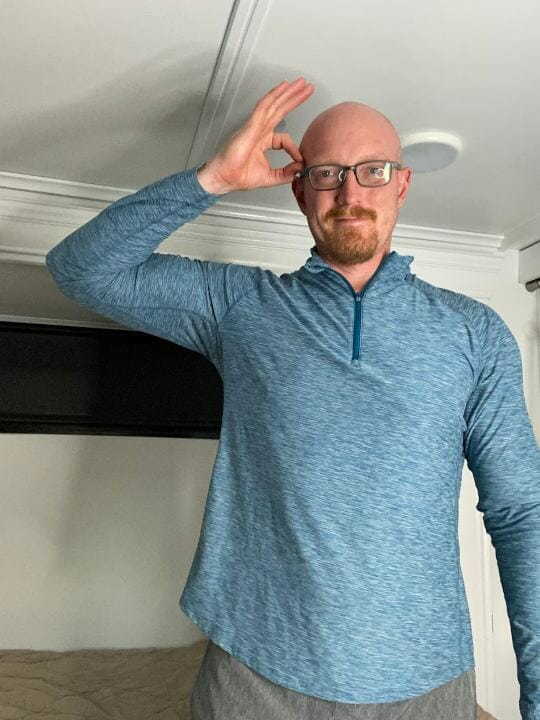
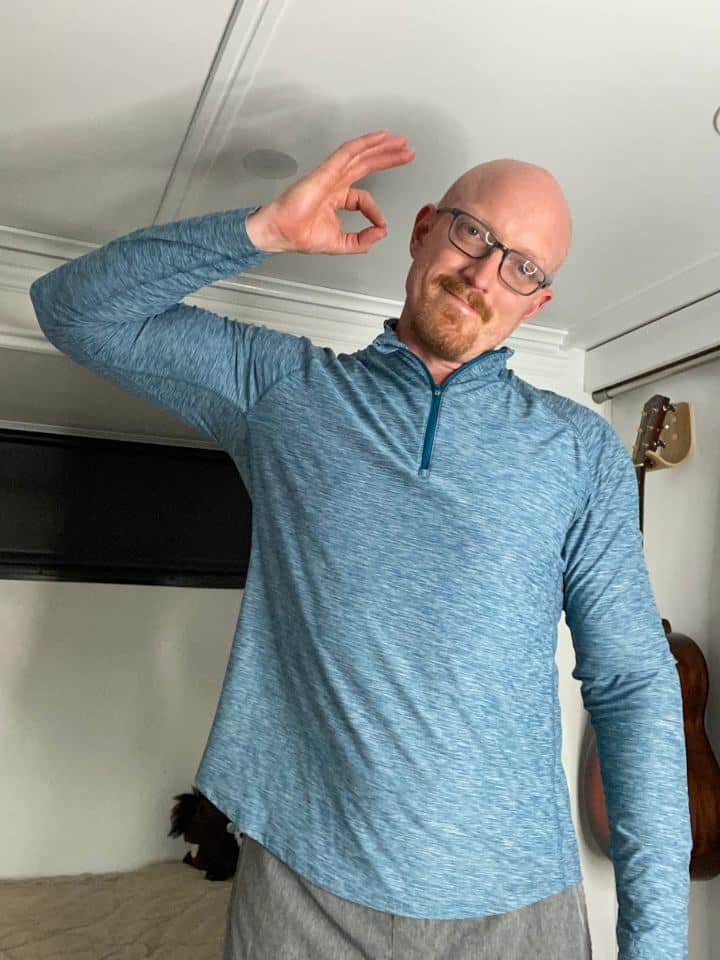
Step 3: From here, bend the neck so that your head moves away from the working arm.
Step 4: To add an extra stretch to the nerve, slightly lift your bent elbow up towards the ceiling.
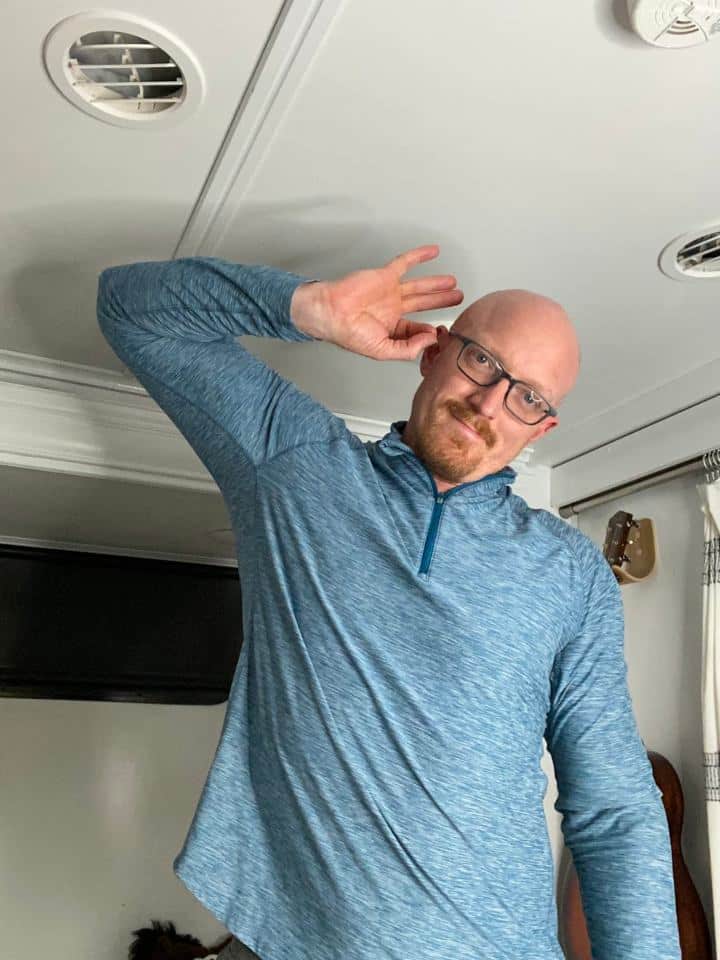
2. Median Nerve Glide
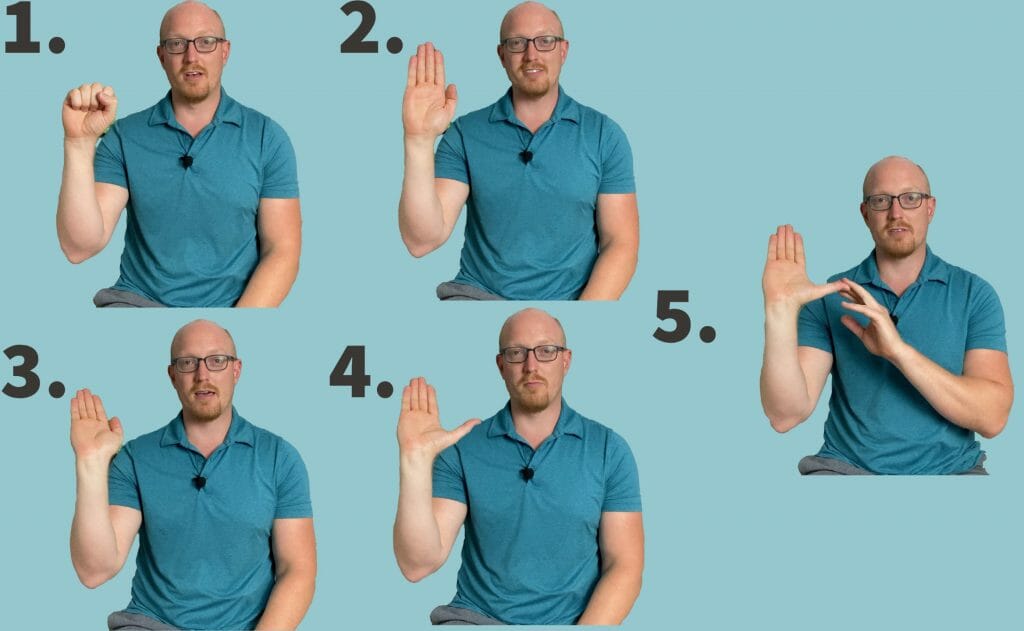
- Stand up straight with your arm by your side and your palm facing up.
- Slowly bend your wrist down to stretch the front of your wrist and palm.
- Bend your head away from your outstretched arm while maintaining good posture and shoulder alignment.
- Hold the position for 2 seconds.
- Return to the starting position with your wrist and head.
- Repeat 10 times.
C: Stretches
1. Levator Scapulae Stretch
- Begin by sitting upright in a chair.
- Depending on the side of pain, place that hand on the seat. For instance, if your right side aches, use the right hand.
- With your opposite hand, gently grasp the side of your head.
- Apply a gentle pressure to guide your gaze toward the opposite armpit.
- Hold for 30 seconds and repeat three times.

2. Pec Stretch

- Standing in front of your doorway, raise your arms up to shoulder height like a goalpost. The elbows will be bent with the palms facing forward.
- Keeping this position, rest the arms against your doorway.
- Slowly lean forward into a gentle stretch and hold for at least 30 seconds.
- Repeat this stretch for a total of 3 times.
D: Strengthening Exercises
1. Chin Tucks
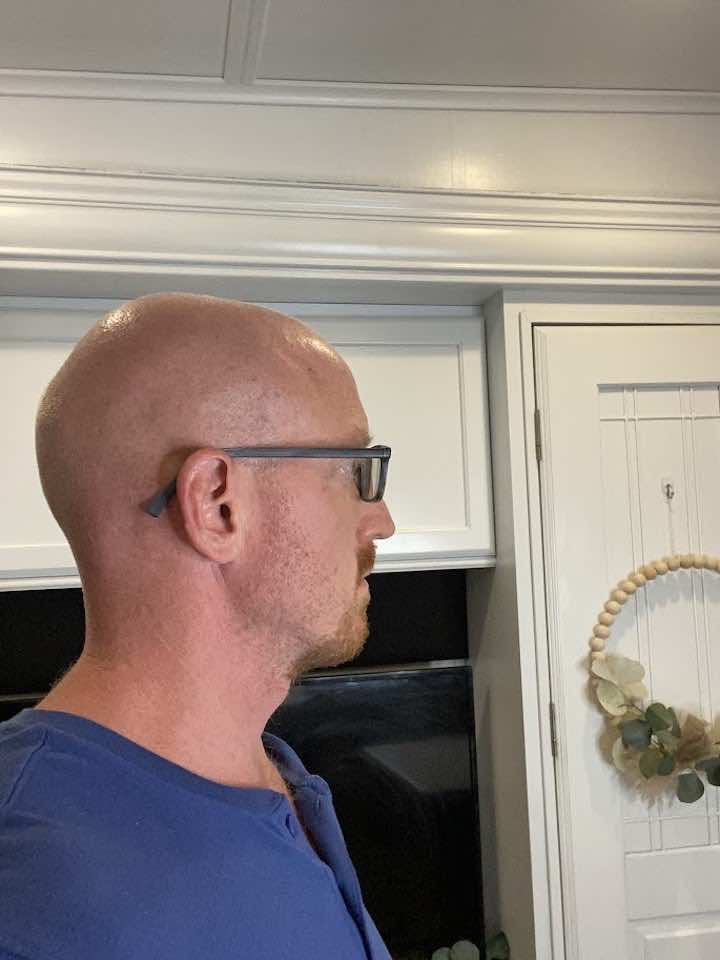
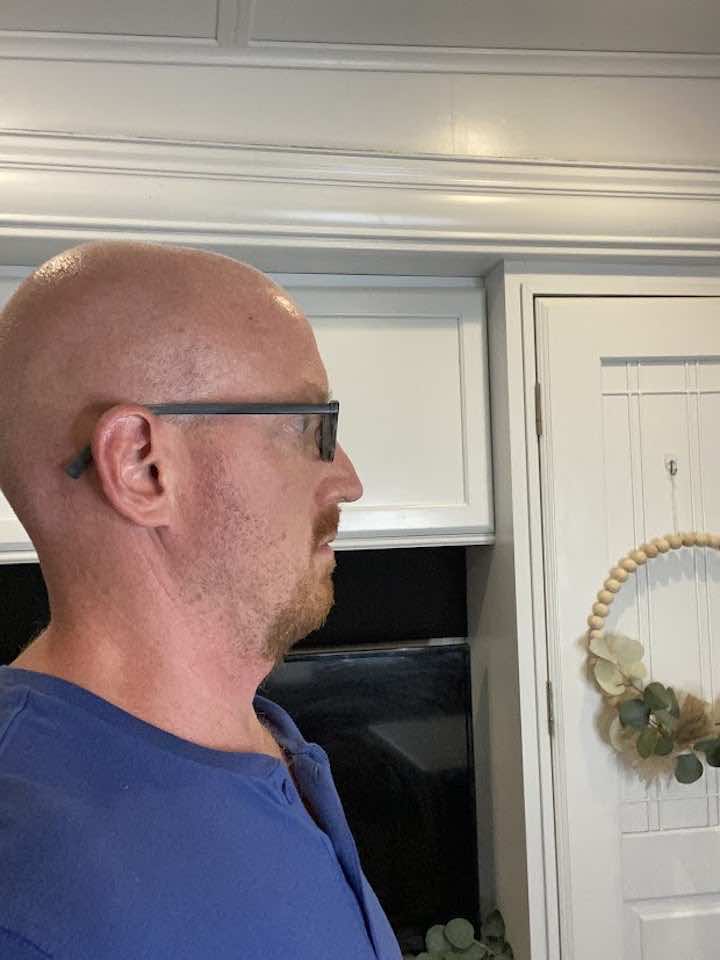
- You can perform a chin tuck laying on your back or sitting or standing.
- Gently tuck the chin directly back as if trying to make a double chin. Avoid nodding your head.
- Hold this position for 2 seconds, then slowly relax your muscles.
- Repeat 10 repetitions.
2. Scapular Retraction
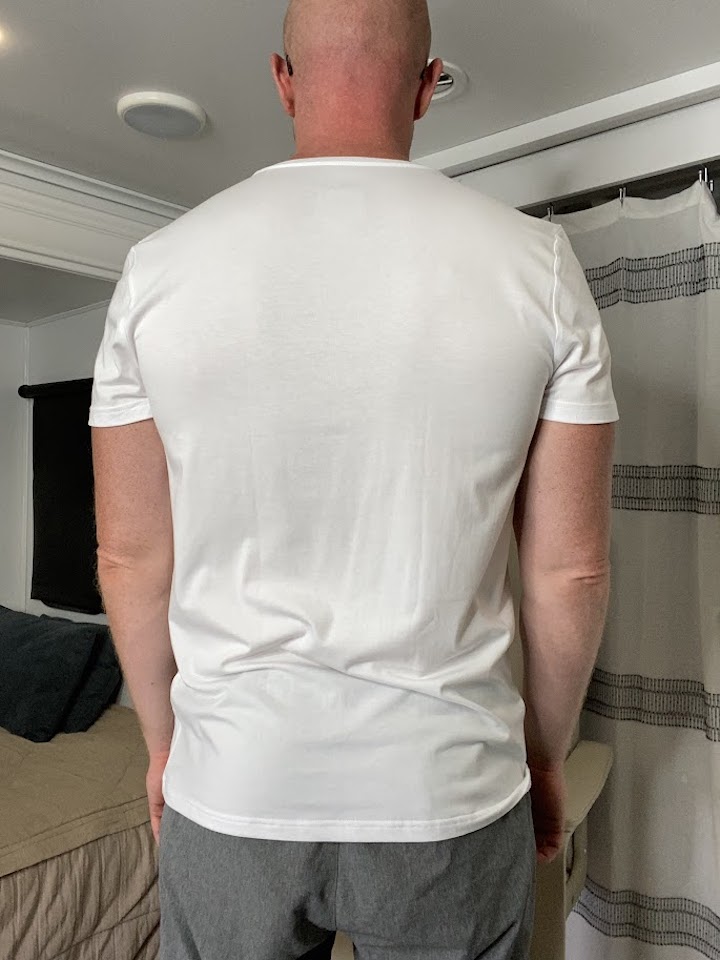
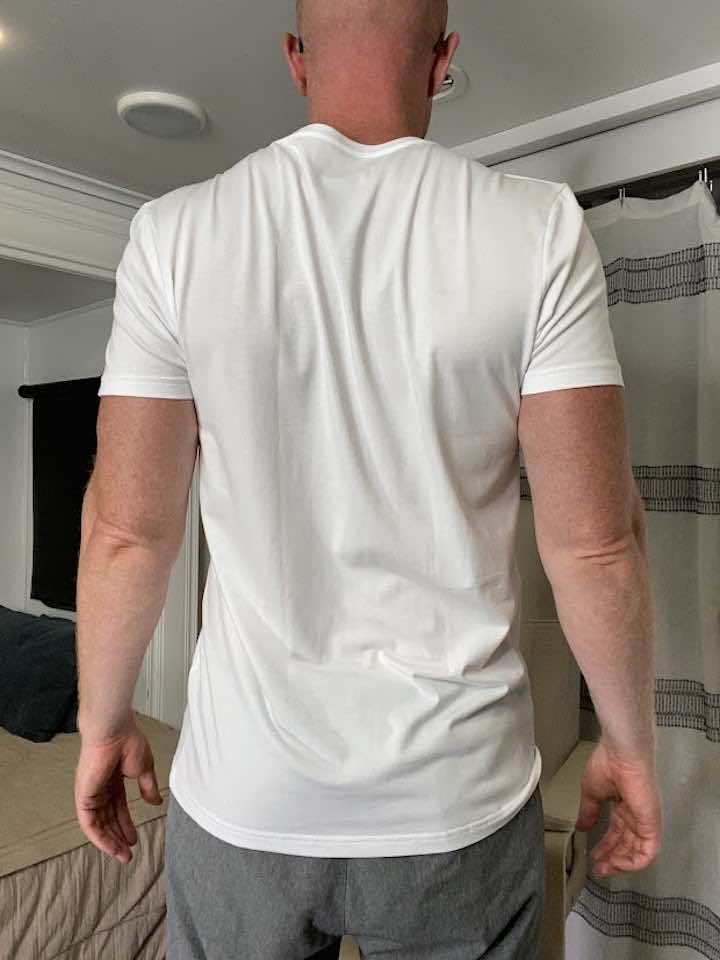
- In a sitting or standing position, try to sit as straight as possible. Aim to position the head in a neutral position as possible.
- Gently pull the shoulders back and squeeze the shoulder blades together.
- Hold for 5 seconds, then relax.
- Repeat 10 repetitions for 3 sets.
3. Rows with Resistance Band
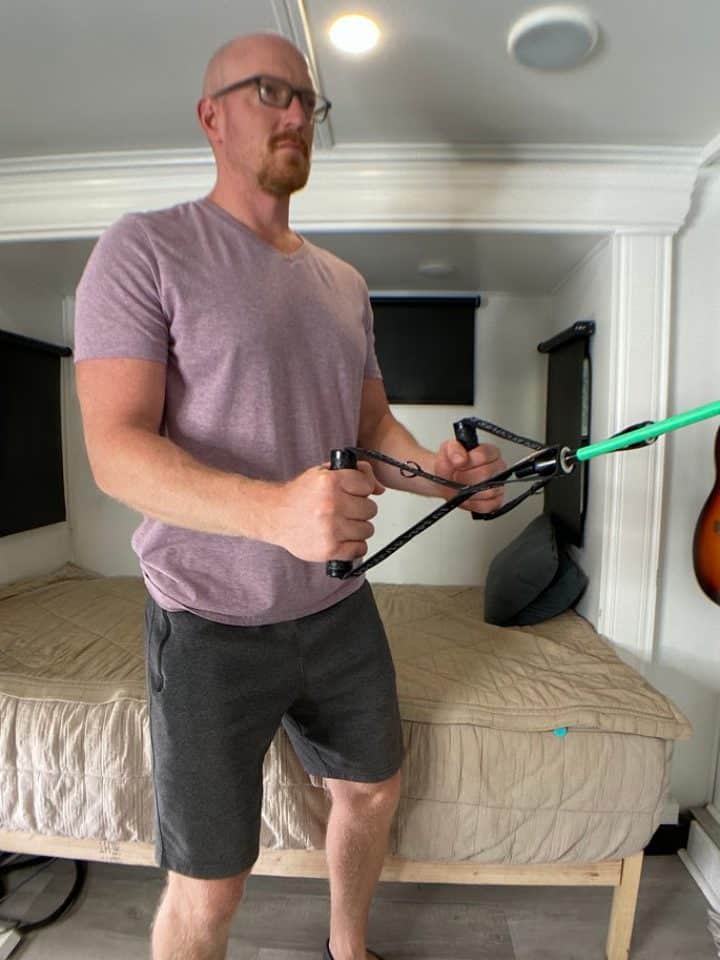
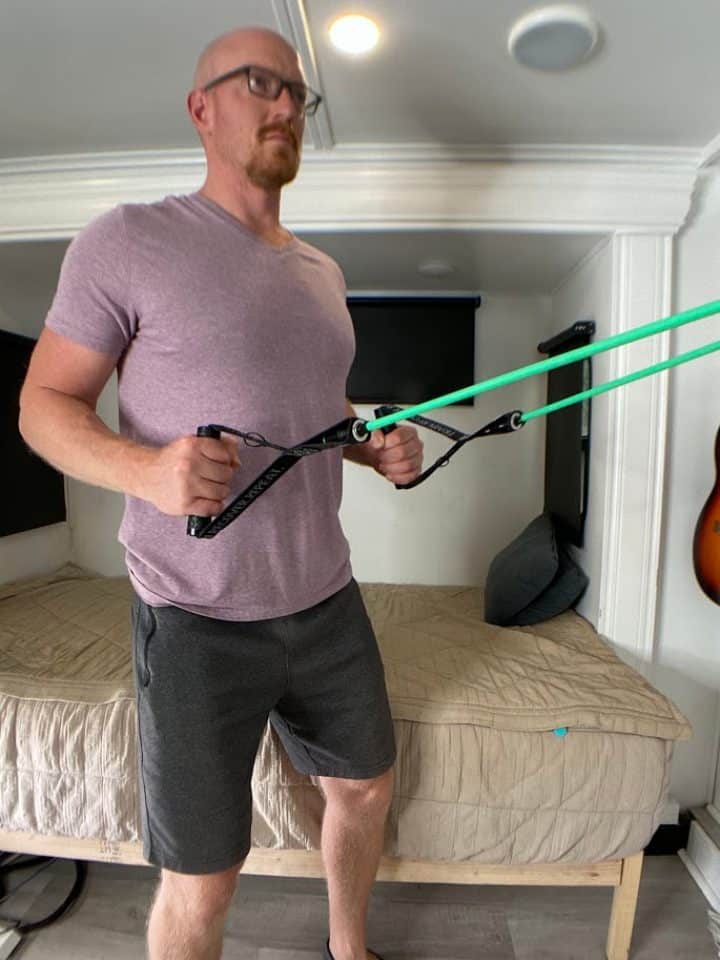
- Hold on to the ends of a resistance band (light, medium or heavy), which you can attach to a door knob.
- Begin with the arms elevated in front of you to shoulder height and the palms facing each other.
- Step back far enough that the resistance bend has a little tension.
- Pull back on the band by bending the elbows and swinging the arms back next to you. Make sure to squeeze the shoulder blades together.
- Hold for 2 seconds, then return to your starting position.
- Repeat 10 repetitions for 3 sets.
Care Tips for Cervical Radiculopathy
Taking care of your neck involves more than just exercises. Here are a few tips to help you manage cervical radiculopathy:
- Maintain good posture: Be mindful of your posture, especially when sitting for long periods.
- Take frequent breaks: If you work at a desk, take short breaks to stretch and move around.
- Use ergonomic devices: Ensure your workstation is set up to support your neck and back properly.
- Stay hydrated: Keeping your body hydrated helps maintain the health of spinal discs.
- Seek professional advice: If your symptoms persist, consult a healthcare professional for personalized guidance.
Conclusion
Dealing with cervical radiculopathy requires a comprehensive approach that includes understanding the condition, recognizing its causes and symptoms, and actively participating in exercises designed to alleviate discomfort.
By incorporating the exercises listed above into your routine, you can take significant steps toward managing neck pain and improving your overall well-being.
Remember, consistency is key, and integrating these exercises with general care tips can offer the best results. If your symptoms persist, don’t hesitate to seek professional medical advice to ensure you’re on the right track to recovery.


